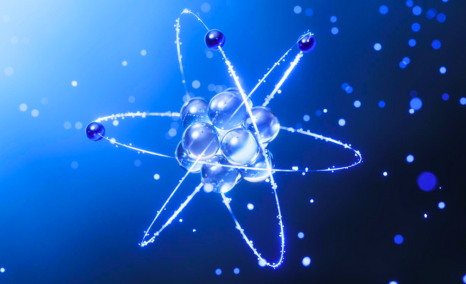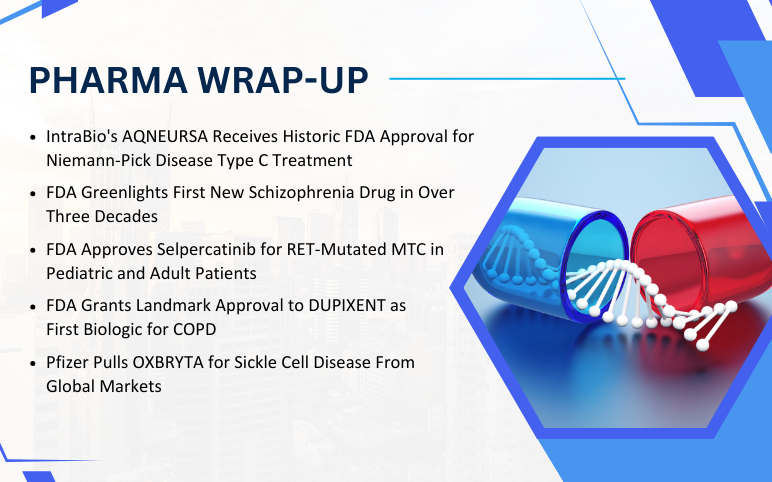New Era in Niemann-Pick Disease: A Comparative Review of MIPLYFFA and AQNEURSA
May 02, 2025
Niemann-Pick disease type C (NPC) is a rare, aggressive, and life-threatening neurovisceral disorder with a profound impact on both patients and the healthcare system. Caused by mutations in the NPC1 or NPC2 genes, NPC disrupts intracellular lipid transport, leading to toxic accumulation of cholesterol and other lipids, especially in the brain and visceral organs. The disease’s complexity, variability in presentation, and lack of early biomarkers result in frequent misdiagnosis and delayed care. With a reported incidence of 1 in 100,000–120,000 live births (NORD), the true prevalence is likely underestimated. The burden of long-term supportive care, repeated hospitalizations, and the absence of curative treatment of NPC puts considerable strain on healthcare systems. NPC’s devastating progression and unmet clinical needs present a compelling opportunity for biopharmaceutical innovation.
This article examines the impact of two newly approved therapies for Niemann-Pick disease type C treatment—MIPLYFFA and AQNEURSA—offering a comparative analysis of their cost-effectiveness and clinical use.
Until 2024, therapeutic options for NPC were limited, with no definitive cure available for any type, and the treatments were largely supportive and focused on managing symptoms and improving quality of life. Recent advancements in the treatment of NPC mark a major turning point in the management of this rare and life-limiting disorder. In a historic move, the U.S. Food and Drug Administration (FDA) approved two distinct Niemann-Pick disease type C therapies in close succession: MIPLYFFA (arimoclomol) and AQNEURSA (levacetylleucine). These approvals represent a significant shift from purely supportive care to disease-modifying options to slow neurological decline.
Downloads
Click Here To Get the Article in PDF
Recent Articles
- Emerging Therapies for Niemann-Pick Disease Type C Treatment: The Road to Progress
- Zevra’s MIPLYFFA Niemann-Pick Disease Approval; FASENRA Approved for Eosinophilic Granulomatosis;...
- Unveiling Lysosomal Storage Disorders: Exploring Rare Diseases Impacting Millions Worldwide
- IntraBio’s AQNEURSA Niemann-Pick Disease Approval; FDA Approves Novel Schizophrenia Drug After 35...
- Everything You Need to Know About Niemann-Pick Disease – From Types to Therapies
MIPLYFFA, developed by Zevra Therapeutics and approved on September 20, 2024, is indicated for patients aged two years and older. It functions as a heat shock protein (HSP) amplifier, enhancing lysosomal activity and stabilizing misfolded proteins, particularly within the NPC1 pathway. Its efficacy is maximized when used in combination with miglustat, and clinical data show a meaningful reduction in neurological disease progression.AQNEURSA, developed by IntraBio and approved shortly after on September 24, 2024, is the first monotherapy approved for NPC in patients aged four years and older and weighing ≥15 kg. This modified amino acid targets cellular energy metabolism and neuronal signaling, offering a flexible treatment option, particularly for patients who cannot tolerate combination regimens. Trials demonstrated significant improvements in motor coordination and other neurological functions.
Clinical Impact and Future Directions in Niemann-Pick Disease Treatment
The FDA approvals of MIPLYFFA and AQNEURSA represent a groundbreaking milestone in the treatment landscape for NPC, offering much-needed therapeutic options tailored to individual patient profiles. MIPLYFFA, used alongside miglustat, may be more appropriate for patients already on miglustat therapy, while AQNEURSA stands out as a viable and more affordable monotherapy alternative. Early intervention with either drug may significantly improve neurological outcomes and extend life expectancy, which typically averages just 13 years in NPC patients. From a market perspective, given AQNEURSA’s affordability and wider therapeutic reach, DelveInsight estimates projected peak U.S. sales of USD 500 million, compared to USD 300 million for MIPLYFFA. These approvals signify a major leap forward in rare disease innovation, emphasizing the growing importance of combination strategies, individualized dosing, and early diagnosis. Moving ahead, post-marketing surveillance and real-world clinical data will be essential in optimizing therapeutic outcomes, especially within pediatric populations and across long-term disease management.

FAQs
Until 2024, therapeutic options for NPC were limited, with no definitive cure available for any type, and the treatments were largely supportive and focused on managing symptoms and improving quality of life. In a historic move, the FDA approved two distinct Niemann-Pick disease type C therapies in close succession: MIPLYFFA and AQNEURSA.
MIPLYFFA enhances the function of heat shock proteins, aiding in the proper folding of proteins and promoting the clearance of accumulated lipids within cells. On the other hand, AQNEURSA targets mitochondrial function, aiming to improve cellular energy production and reduce the accumulation of lipids.
MIPLYFFA is taken orally three times daily in combination with miglustat. Whereas, AQNEURSA is also taken orally up to three times per day, with or without food. The dosage varies based on the patient’s body weight.
No, the FDA has not approved the combination of MIPLYFFA and AQNEURSA for the treatment of NPC.
Downloads
Article in PDF
Recent Articles
- Everything You Need to Know About Niemann-Pick Disease – From Types to Therapies
- Emerging Therapies for Niemann-Pick Disease Type C Treatment: The Road to Progress
- Zevra’s MIPLYFFA Niemann-Pick Disease Approval; FASENRA Approved for Eosinophilic Granulomatosis;...
- IntraBio’s AQNEURSA Niemann-Pick Disease Approval; FDA Approves Novel Schizophrenia Drug After 35...
- Unveiling Lysosomal Storage Disorders: Exploring Rare Diseases Impacting Millions Worldwide



